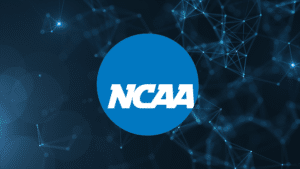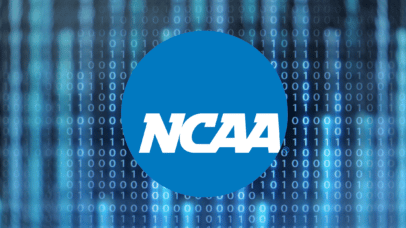Making the Move: The Ultimate Guide to Navigating the NCAA Transfer Portal
Updated on Jun 3, 2025

Did you know more than 31,000+ student-athletes entered the NCAA Transfer Portal last year? When a student-athlete enters the NCAA Transfer Portal, they are notifying their current college that they plan to leave. They are also indicating to other colleges that they are available for recruitment, and they are allowed to communicate with coaches from those other schools.
While transferring has become more popular in recent years, student-athletes should know that transferring can have long-lasting implications on their collegiate athletic and academic careers.
What is the NCAA Transfer Portal?
The NCAA Transfer Portal helps the NCAA manage the college transfer process from start to finish, adds more transparency to the process among schools, and empowers student-athletes to make public their desire to consider other programs.
The NCAA Transfer Portal is only accessible to NCAA Division I (DI), Division II (DII), and Division III (DIII) coaches and administrators. NAIA and two-year colleges do not have access to the NCAA Transfer Portal.
For college student-athletes, deciding to enter the NCAA Transfer Portal can be a game-changer. Whether it’s to pursue new athletic opportunities, academic programs, or a change of scenery, entering the portal can offer exciting possibilities. However, it’s important for student-athletes to think ahead before making this significant move and to know the steps they must take to avoid compliance infractions that could impact their ability to compete.
Steps to Entering the NCAA Transfer Portal
Regardless of why you are considering a transfer, it’s important to understand the steps involved in the process and make the most out of the resources available. Honest Game has outlined the steps you need to take when entering the NCAA Transfer Portal, so you can have a better understanding of the process and can navigate the transfer process with confidence. Let’s get started!
1. Contact Your Current School’s Compliance Officer: If you wish to leave your current four-year school as a DI/DII student-athlete and transfer to another four-year institution, you must complete the Notification of Transfer process and have your name added to the NCAA Transfer Portal by your school’s Compliance Officer. All students who enter the NCAA Transfer Portal must have an NCAA ID (and certification account) with the NCAA Eligibility Center.
DIII student-athletes must complete a “Permission to Contact” form. DIII schools may utilize the portal at their discretion to search for prospective student-athletes; however, it is not legislated by the NCAA.
2. Watch the NCAA Transfer Portal Video: Student-athletes should watch the required NCAA Transfer Module Video if they are looking to transfer from an NCAA DI or DII school to educate themselves on the process of entering the NCAA Transfer Portal.
Once the student-athlete has completed watching the video and has submitted their information for a completion certificate, they will receive a confirmation email from [email protected] indicating that they have begun the process to enter the NCAA Transfer Portal.
Honest Game Insight: Students should contact their college’s Compliance Office soon after completing the video to complete the process of entering the Transfer Portal. Since students are not able to enter their own name into the NCAA Transfer Portal, it is important to confirm with the Compliance Office that their name has been added to the NCAA Education Module list.
DI schools must enter a student’s name in the portal within two business days; DII schools must do so within seven business days.
The school’s Compliance Officer is typically the person to enter the student’s name and supporting information pertinent to the student-athlete into the NCAA Transfer Portal. Supporting details may include the number of completed competition seasons if the student-athlete would like to be contacted by other college coaches, and the contact information to do so.
Additional details will also be added if the student-athlete was recruited by their current school, and for DI schools – whether their aid is canceled due to entering the NCAA Transfer Portal.
Student-athletes will be notified by the supplied email once the Compliance Officer submits their name and information.
Honest Game Insight – Use a non-school email address, as some schools may deny access to their email system once a student withdraws or leaves the school. The email you provide in your portal will be how college coaches contact you and how the NCAA will notify you about your account. Make sure you have access to the email you provide!
3. Create a Best-Fit College List: When creating a list of best-fit athletic programs and schools, student-athletes need to be realistic about the academic and athletic fit of each school is key to a positive recruiting experience and college admission outcomes. Be sure to think about what you need in the five following categories: academic, athletic, student-life, financial, and career goals.
Keep a list of questions handy when speaking with prospective college coaches. These questions can help you compare colleges and find the best college fit for your goals.
4. Communicate with Potential Coaches: Frequently check your email and have your phone ready to make sure you are easily accessible to potential college coaches.
How to Transfer to an NCAA Program from an NAIA School
NCAA recruiting rules require any NAIA student-athlete wishing to contact an NCAA DI or DIII school to first obtain a “Permission to Contact” from their current NAIA school. If you are a current NAIA student-athlete, be sure to consult with the Director of Athletics at your NAIA school for your request when ready. You may also write to any NCAA DI or DIII school to request they ask your current NAIA school for a “Permission to Contact”, if necessary. If permission to contact is not granted, the new NCAA DI or DIII school may not encourage the transfer.
For any NAIA student-athlete wishing to contact an NCAA DII school, a “Permission to Contact” is not required to begin speaking with the DII school. However, if the NCAA DII school chooses to begin recruiting you, it is obligated by NCAA recruiting rules to notify your NAIA school of any recruiting activity.
Transferring Schools within the NAIA
The NAIA considers you a transfer student if you have taken time off between high school and coming to the NAIA or have previously attended two- or four-year college, regardless of whether you participated in collegiate athletics.
There is no NAIA Transfer Portal for student-athletes to enter; however, all students looking to compete at the NAIA level are requested to register with the NAIA Eligibility Center at PlayNAIA.org to have their eligibility determined.
Transfer Rules for Student-Athletes Moving from Junior College to 4-year NCAA Schools
For many student-athletes, recruiting from the JUCO division can happen late in the recruiting process and decisions are often made quickly. Being able to articulate your transfer and eligibility status to college coaches will increase your chances of landing at a four-year school.
The first question is, are you considered a “transfer student”? This might sound easy, however, some students are not defined as an actual transfer student because they didn’t “trigger transfer status” by completing one of the following steps:
- Were you a full-time student at a two or four-year school during a regular academic term?
- Did you practice or compete with a college team (even if you were not enrolled full-time and practiced before school started)?
- Did you receive athletic aid while attending summer school?
- Did you receive aid while attending an NCAA DI school during the summer?
If you answered NO to ALL of the questions above, you can enroll at a two or four-year school under the regular NCAA Initial Eligibility and Amateurism rules. Learn about the NCAA rules and requirements you will need to meet in order to be academically eligible to compete.
If you answered YES to ANY of the questions above, you are considered a transfer student, which means you’ve triggered transfer status. Once you’ve been deemed a transfer, you will need to follow a specific set of rules to compete at an NCAA school. The next step is to confirm what kind of NCAA account (Profile Page or Certification Account), you may have created in the past.
Learn more about paving the way for your transition from JUCO to a four-year school as a 2 – 4 Transfer student-athlete.
Frequently Asked Questions about the NCAA Transfer Portal
What is the “One-Time Transfer Rule”?
For those students who wish to leave their school and are currently academically eligible to play the following year, a fairly new NCAA legislation now allows a one-time transfer to a new school and allows the student-athlete to receive aid and compete right away, as long as they follow the Notification of Transfer rules. Each sport has a window of time in which the student-athlete can enter the NCAA Transfer Portal.
If a student-athlete requests to be entered into the NCAA Transfer Portal outside of their sport’s window of time, they will need to wait until it opens later in the year. Graduate Transfers may enter the NCAA Transfer Portal at any time.
What Happens to My Current Scholarship When I Enter the NCAA Transfer Portal?
NCAA DI schools are allowed to cancel or reduce a student’s scholarship as early as the next term after a student-athlete enters the NCAA Transfer Portal. Unfortunately, for those students who enter the NCAA Transfer Portal and then change their mind at a later date, they may have lost their scholarship (and their roster spot) by the time they finalize their decision. NCAA DII schools may also cancel or reduce a scholarship at the end of the period of the award on the scholarship agreement.
What is the Worst Thing That Could Happen If I Enter the NCAA Transfer Portal?
If you owe any money to your current college/university, such as tuition bills, library fines, and parking tickets – your current school will not release your transcript. When this happens, you will not be able to compete or receive a scholarship at a new college until your existing school bills are paid.
If you don’t meet transfer academic eligibility requirements, you might not be eligible to transfer to another four-year college. Ensure you have met the detailed academic requirements before entering the NCAA Transfer Portal. In these cases, students are unable to transfer and oftentimes have lost their scholarship and roster spot at their current school. In this circumstance, the options they have are to transfer to an NAIA or two-year college or drop out of college. See below for more details.
What Will Happen for the Remainder of My Time at My Current School?
The day you enter the Transfer Portal, your access to student-athlete services could be taken away. Access to daily perks like tutoring, academic advisors, strength and conditioning facilities, athletic training room, team meals, and locker rooms could all be denied.
Since you are no longer considered a “student-athlete” who plans to return the following season, those services are no longer promised to you.
Can Your Situation Change at Your Current School By Next Year?
Are you unhappy with the playing time you hoped for? Will that be different next year? Were you playing behind a strong upperclassman who had more college playing experience? Will they be graduating and opening a spot for you and next year could be much different? These are all questions and scenarios to consider before making the often stressful decision to transfer schools.
Honest Game Insight – Speak candidly with a member of your current coaching staff about where they see your role next year. Maybe your time has come and patience is on your side. Leaving now and transferring to a new school could put you in the same position you were in last year, but with a new team of veterans.
Are You Entering the NCAA Transfer Portal Because Your Current Coaching Staff Has Left?
The collegiate coaching carousel and transient nature of coaching mean the coaching staff who recruited you may not be there on graduation day. Did your coaching staff leave for another job and now you are left wondering if the new staff will see your role the same? Are you entering the portal because you are nervous about what next year will bring?
Consider staying at your current school and giving the new coaching staff a try. You have comfort in this school. You’ve established yourself, made friends and you’ve navigated being a student-athlete with your school’s resources. Transferring schools now will not only have you starting over at a new school with a new staff but also in a new environment. If you have to play for a new staff, at least have it be at the place you already know.
How Does Academics Affect NCAA Transfer Students?
Just getting accepted at a new school and receiving an offer for an athletic scholarship does not mean you will be able to compete upon transfer. Transfer student-athletes must meet specific and nuanced academic eligibility rules if they want to compete at their new school.
Students must have passed at least 6 credits in the term before they transfer and depending on the year in school, 18 credits between fall, winter, and spring terms prior to transferring.
Additionally, student-athletes who begin their junior year (5th semester) must have 40% of the degree completed at their new school upon entry. That means roughly 48 credits from your first school must be directly transferable and degree applicable to your major at your new school.
Many schools also have transfer rules that only allow grades of C or higher to transfer, and thus students usually lose credits during transfer. Additionally, you should investigate if you can be accepted into the major you want at your new school. These are usually pieces of the puzzle that may not be directly answered until students are ready to enroll at their new school and released from their previous school.
Honest Game Insight – Speak with Admissions or Academic Advisors at the new school prior to entering the NCAA Transfer Portal. These are all professionals who can speak with you per NCAA rules and will be able to offer a Preliminary Transfer Evaluation of your current classes.
At some schools, there is a limit on the number of transfer credits they accept. For those transfer student-athletes entering a new school in their senior year (7th semester), they will need to bring in 72-degree applicable credits of C or higher at most schools to be eligible. Unfortunately, some universities have transfer caps that don’t allow for this possibility, and even if you have a 4.0, you can not transfer and be eligible to compete right away.
How Close to Graduation Are You? Will You Be Transferring for a Graduate Degree?
Some students are efficient with their time at their first school and complete their degree with a year or two of eligibility remaining. These “grad transfers” are allowed to enter the NCAA Transfer Portal, attend a new school, and compete while in a graduate program. However, some students rely on summer school to finish their undergraduate degree. Once students enter the NCAA Transfer Portal, their institution does not need to pay for summer school during the summer prior to transferring to graduate school, and thus, student-athletes are left with a tuition bill. Those who can’t afford to pay for summer credits, then can not graduate, transfer and compete.
Honest Game Insight – Be educated early about your progress towards graduation and how many credits you need to complete your degree, and when those courses are offered. If you think you may be transferring for graduate school, start planning in your junior year and work with your Academic Advisor to schedule your coursework to be completed during the spring of your senior year.
How Much Playing Eligibility Will You Have Upon Transfer?
Seasons of competition are different for each sport but in general, competing for the team could mean you’ve used a season of eligibility. Some students think of transferring after a year of limited playing time thinking they are eligible to reuse that year of playing eligibility, but that is not always the case. Your NCAA Transfer Portal information will have the number of seasons of competition used, and many prospective coaches using the NCAA Transfer Portal will look for how many seasons of eligibility remain on your eligibility clock.
Honest Game Insight – Speak to a Compliance Officer about the number of seasons you have left to compete. Educate yourself on the COVID waivers and rules regarding seasons of competition. If you were injured and plan to use a Medical Redshirt, your CURRENT school must file that Medical Hardship waiver documentation for you.
Does Your Current Conference Have an Intra-Conference Transfer Restriction?
Many conferences have rules which prohibit a student-athlete from transferring to an institution within the same conference and restrict you from competing right away. Often, this involves sitting out one year before playing and losing a competition season.
Honest Game Insight – Ask members of your Student-Athlete Advisory Committee (SAAC) for the Intra-Conference Transfer policy and your Student-Athlete Handbook to familiarize yourself with those policies.
What If I Change My Mind After I Enter the NCAA Transfer Portal?
Some student-athletes enter the NCAA Transfer Portal thinking they will receive an abundance of offers, but in the end, they do not receive overwhelming interest from prospective coaches. As stated above, you may have lost your roster spot and athletic scholarship by the time you change your mind. Communicate with your coach and the compliance staff to understand what your options are if you change your mind.
Honest Game Insight – Make sure you are confident in your decision to enter the NCAA Transfer Portal. While your current school has the obligation to remove your name from the NCAA Transfer Portal upon your request, oftentimes the emotions of requesting to initially transfer can impact the relationship you have with your coach.
Have more questions about entering the NCAA Transfer Portal or are interested to know where you or your student-athletes’ academic eligibility status stands? Honest Game Counselors are available to provide one-on-one assistance to support student-athletes in navigating post-secondary opportunities athletically and academically. Schedule a time to meet virtually with our experts.

As a former Senior Associate Athletic Director at the NCAA Division I level and with more than 20 years of experience in collegiate athletics, Courtney has advised thousands of student-athletes through the college recruiting and eligibility process for college sports. Interested in virtual counseling with Courtney? Sign up here.



